Pickleball Ball 101: Choosing the Perfect Ball for the Game
- Team Pickleball
What is Pickleball Ball?
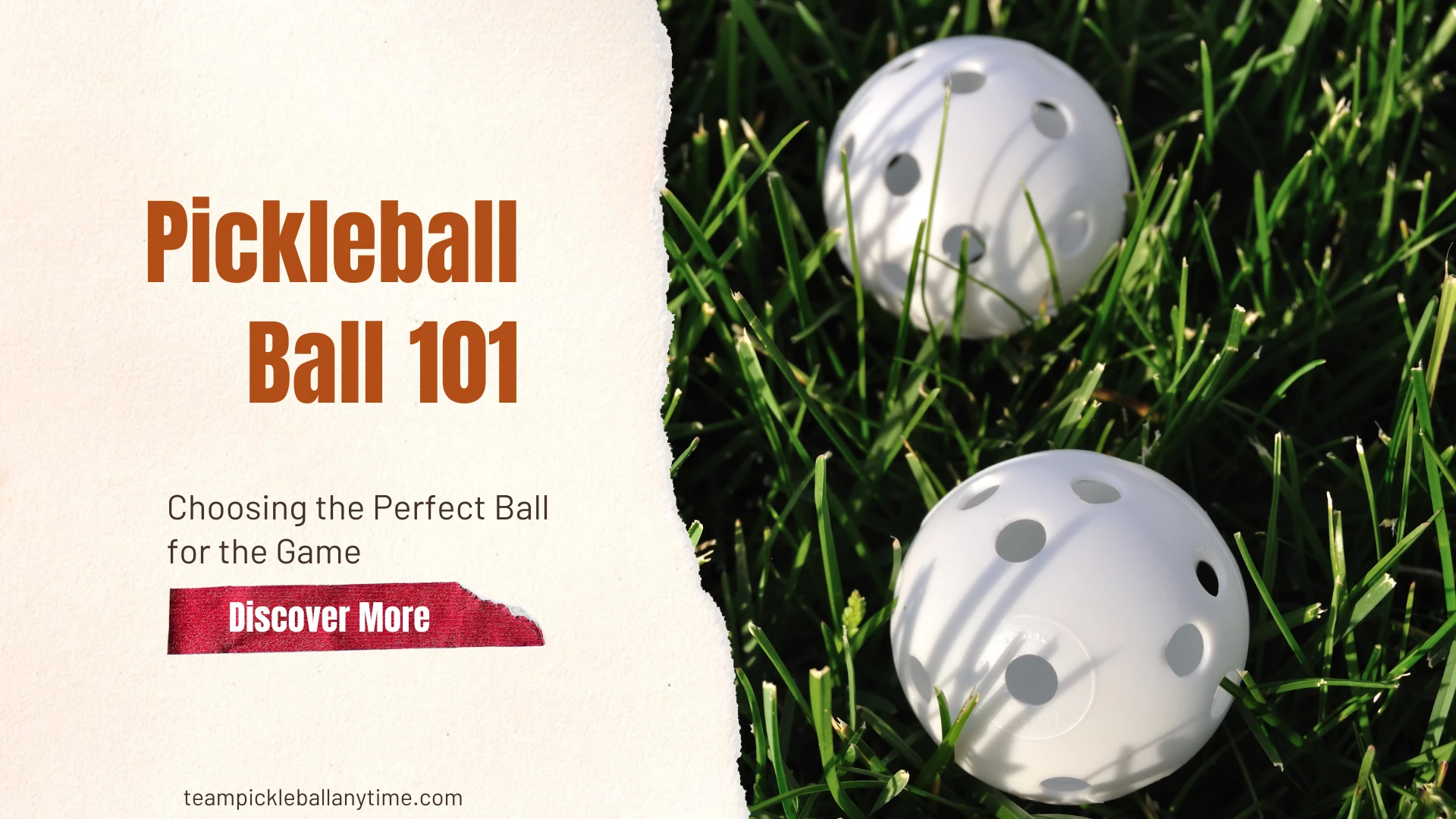 The ball used in the Pickleball game is commonly called a Pickleball ball. Clearly, this paddle sport combines elements from tennis, table tennis, and badminton. Similarly, players engage in the game on a smaller court than tennis, which showcases a lower net. This sport particularly uses solid paddles to hit a holed ball over the net.
The ball used in the Pickleball game is commonly called a Pickleball ball. Clearly, this paddle sport combines elements from tennis, table tennis, and badminton. Similarly, players engage in the game on a smaller court than tennis, which showcases a lower net. This sport particularly uses solid paddles to hit a holed ball over the net.
A Pickleball ball is similar in size to a wiffle ball. Crafted from durable plastic, it proudly displays distinct hole patterns on its surface. Given that, it allows controlled air travel and consistent performance during play. The ball is lightweight, ranging from 0.8 to 1.02 ounces (22.7 to 29 grams).
Pickleball balls come in different colors, although yellow and white are the most common besides neon. However, factors such as playing conditions, lighting, and personal preferences can influence the variation in color choice. Meanwhile, various Pickleball organizations regulate the construction and specifications of the ball to ensure similarity and fair play across different competitions.
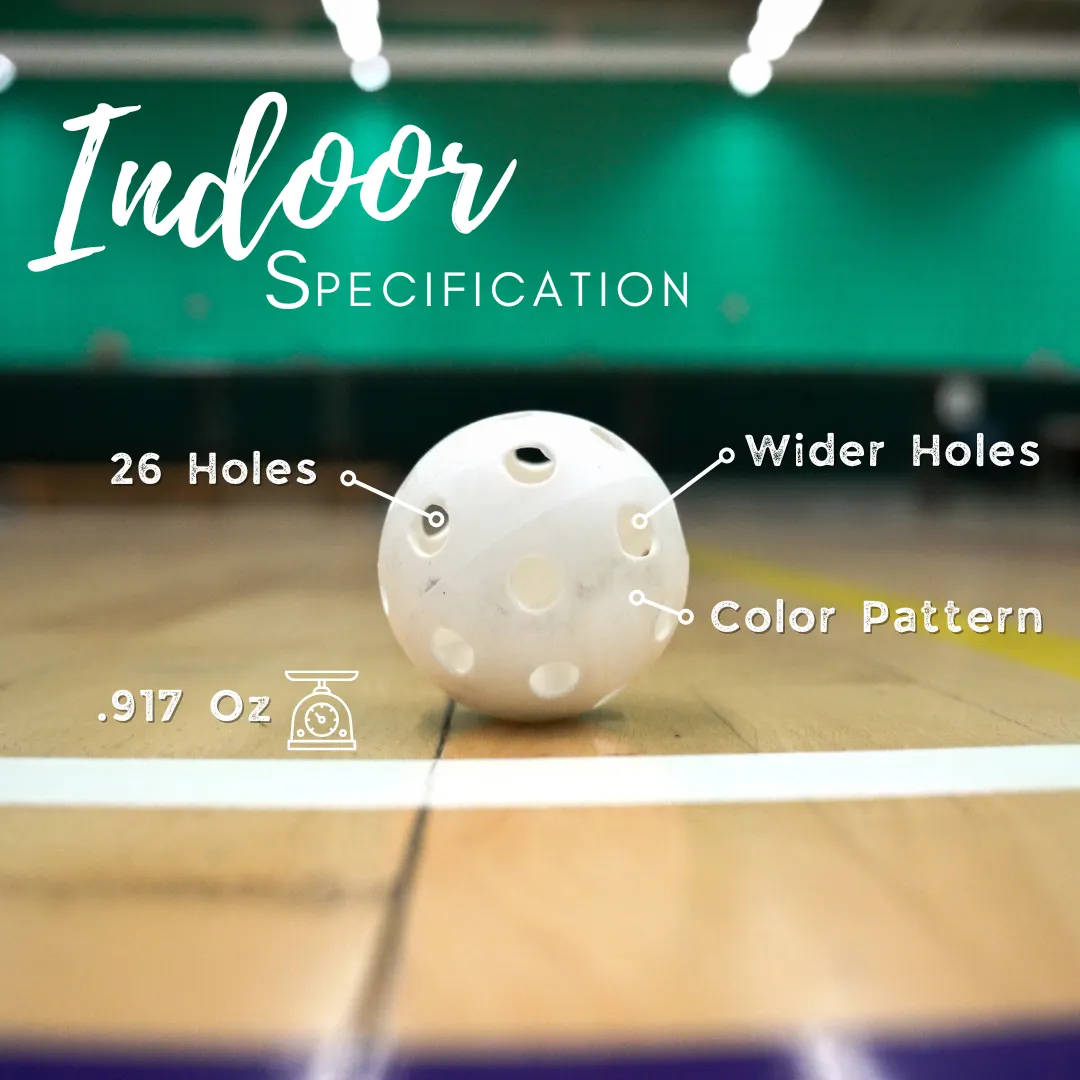 1. Indoor Balls: These balls are optimized for indoor gameplay with smooth surfaces. It not only provides a balanced combination of bounce and control but also tailors its responsiveness to indoor court conditions.
1. Indoor Balls: These balls are optimized for indoor gameplay with smooth surfaces. It not only provides a balanced combination of bounce and control but also tailors its responsiveness to indoor court conditions.
a. Material: Indoor balls are made of softer plastic. As such, this helps reduce the noise and impact on indoor surfaces, thus making them ideal for noise-sensitive surroundings.
b. Bounce and Responsiveness: Due to their softer composition, indoor balls enable a livelier bounce, thereby allowing a more dynamic and without a doubt, responsive gameplay experience.
c. Hole Pattern and Color: Indoor balls incorporate larger holes to counterbalance the still air of the indoor environment. In addition, these balls commonly feature bright colors such as white or light green, which results in increased visibility against indoor lighting.
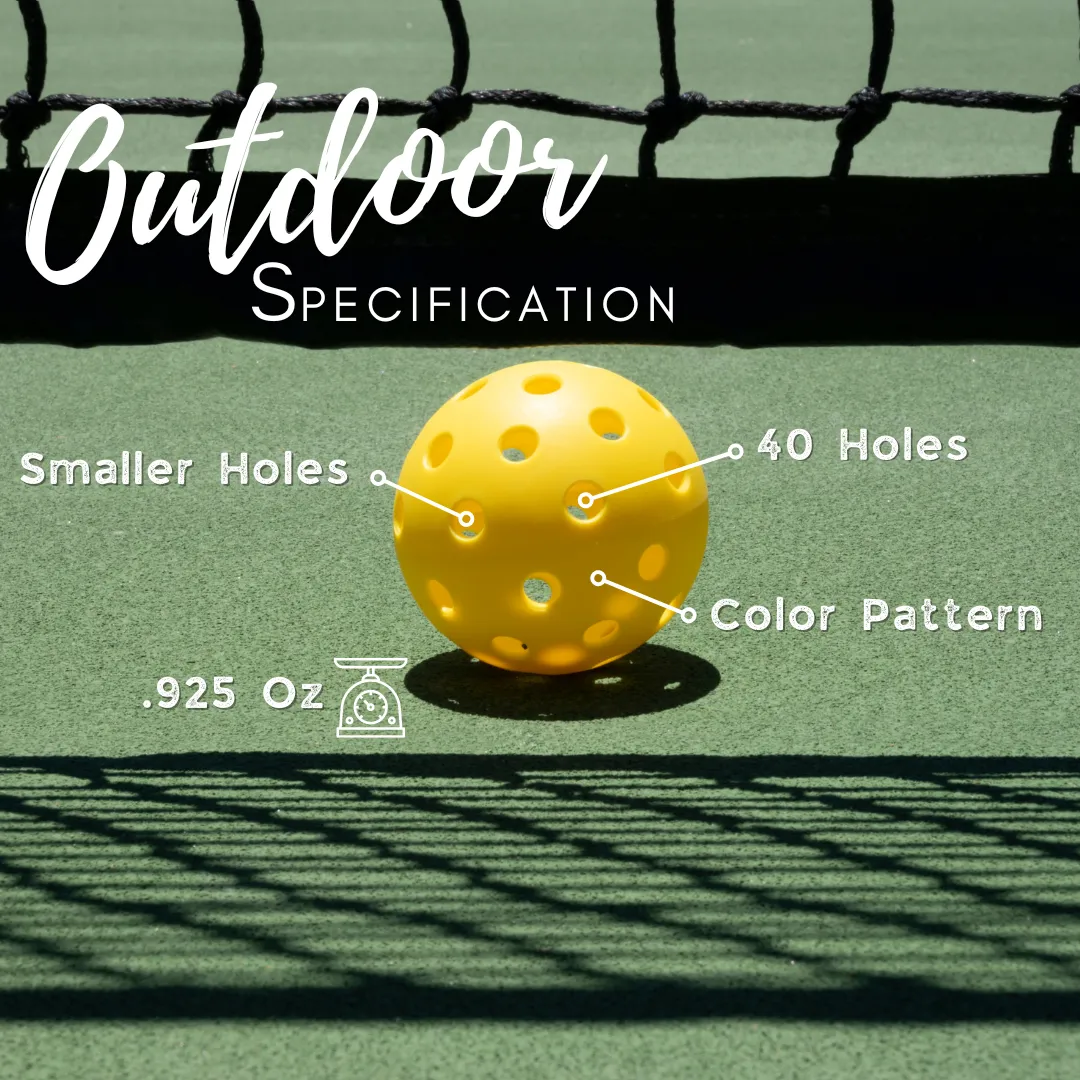 2. Outdoor Balls: Outdoor balls are designed to withstand the demands of rough outdoor surfaces, distinguishing them from indoor balls. They typically possess greater durability and stronger construction to handle the impact and abrasion experienced. These balls aim to deliver not only a consistent level of performance but also durability during outdoor play.
2. Outdoor Balls: Outdoor balls are designed to withstand the demands of rough outdoor surfaces, distinguishing them from indoor balls. They typically possess greater durability and stronger construction to handle the impact and abrasion experienced. These balls aim to deliver not only a consistent level of performance but also durability during outdoor play.
a. Durability: Outdoor balls are created using durable materials such as hard plastic to withstand rough surfaces and outdoor conditions. As a result, they exhibit increased endurance compared to their indoor counterparts.
b. Weight and Hole Pattern: Their slightly heavier weight and smaller holes allow them to resist wind interference and maintain stability during outdoor play. This feature guarantees better control and accuracy in your shots, resulting in an enhanced playing experience.
c. Color Options: On the other hand, outdoor balls use bright colors such as yellow to strengthen visibility and easy tracking against the outdoor backdrop.
Key Factors to Consider:
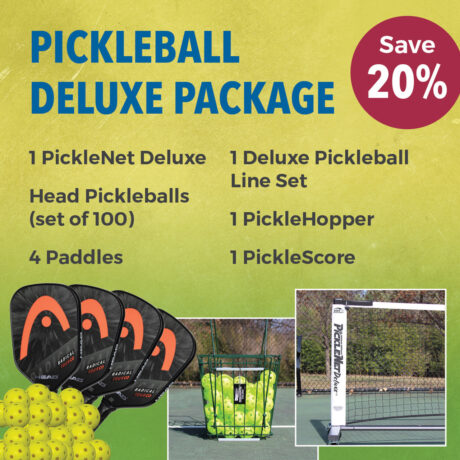 1. Ball Specification: Pickleball balls possess clear specifications that outline their size, weight, and distinctive attributes
1. Ball Specification: Pickleball balls possess clear specifications that outline their size, weight, and distinctive attributes
a. Ball Weight: Pickleball balls typically range from 0.78 to 0.935 ounces (22.1 to 26.5 grams). However, some players prefer lighter or heavier balls depending on their playing style and comfort.
b. Color: Pickleball balls come in different colors, such as yellow, white, or neon. The selection of color can depend on personal preference, as well as visibility in various lighting conditions and the playing venue’s rules.
c. Ball Size: The ball must be 2.87 inches (7.29 cm) to 2.97 inches (7.54 cm) in diameter. As such, the overall difference in maximum out-of-round diameter should generally not exceed +/-0.020 inch (0.51 mm).
d. Bounce: The ball must demonstrate a bounce height between 30 to 34 inches (76.2 to 86.4 cm) when dropped from a height of 78 inches (198.1 cm) onto a granite surface plate with dimensions of at least 12 inches (30.5 cm) by 12 inches (30.5 cm) by 4 inches (10.2 cm).
2. Ball Type: Pickleball balls have two indoor and outdoor play variations. Manufacturers design indoor balls with a specific focus on playing on indoor courts with smooth surfaces. In the same way, outdoor balls exhibit greater durability and effectiveness on rough outdoor surfaces. For frequent or competitive play, it is essential to use Pickleball balls made of durable, thicker plastic. This will allow players to withstand intense play.
3. Player Level: Softer balls and slower speed are recommended for beginners as opposed to intermediate and advanced players. This is to cater to each individual’s specific needs and skill levels based on their speed, responsiveness, and control. Overall, assess your skill level and playing style when choosing the right Pickleball ball.
1. Approved Ball List: The organization maintains a list of approved Pickleball balls that meet the standards of the USAPA. In order to be deemed “officially approved,” the ball must be included on the USAPA’s approved ball list. Referees rely not only on the printed brand of the ball but also on its marker as an approved ball. Furthermore, the ball must have a unique color apart from the maker’s brand or logo.
2. Ball Specifications: According to the official ball specifications, a Pickleball must have a diameter of 2.874 to 2.972 inches (73 to 75.5 millimeters). In addition, it weighs between 0.78 to 0.935 ounces (22 to 26.5 grams). At any rate, the ball shall have a minimum of 26 to a maximum of 40 round holes with spacing.
3. Smooth Surface: A smooth surface without any nubs or bumps that could impact its flight or bounce is, therefore, a requirement for the ball.
4. Bounce Height: When dropped onto a solid surface from a height of 78 inches (2 meters), the ball must, consequently, rebound to a height between 31 to 33 inches (78.7 to 83.8 centimeters).
5. Ball Check: A “ball check” is performed to ensure the ball meets the required standards before starting a game. During this process, verification is carried out on the surface’s dimension, weight, smoothness, and bounce height.
6. Certification: Make sure that the Pickleball ball you choose is approved by well-known Pickleball organizations, such as the USA Pickleball Association (USAPA). It is equally important that the certified balls adhere to specific standards not only for size, weight, and performance but also to ensure fair play in competitive settings.
In Conclusion:
These rules may be subject to updates or revisions by the USAPA. Hence, we strongly encourage players and organizers to consult the official USAPA rulebook for the latest and most up-to-date guidelines on Pickleball rules.
In the same way, personal preference plays a huge role in choosing the right ball for an enjoyable and successful game. Some players may prefer a specific brand even if they are in a certain skill level category. Choose the right ball based on your playing environment and ensure the ball’s suitability for particular court conditions.
In closing, by understanding the differences between outdoor and indoor balls and considering your skill level, you can, therefore, select the perfect ball that matches your needs. Ultimately, whether playing for leisure or in competitive settings, choosing the right Pickleball ball remains an indispensable aspect of the game. Practice and experimentation will help you find your preferred ball, thus, allow you to excel in this exciting sport.

Pickleball Techniques and Strategies: from Beginner to Champion
From Beginner to Pro: Ace your Play with our Pickleball Techniques & Strategies to Dominate the Court in your Next Game.

Pickleball Apparel: Play in Style with the best Pickleball Apparel
Step into the spotlight, make a lasting impression, and become a trendsetter on the Pickleball court with our Pickleball apparel guide.

Pickleball Gifts: Thoughtful Ideas For Beginners to Ace The Game
Thinking about the perfect gift for someone just starting in Pickleball? Discover our Pickleball gift guide tailored for beginners. Look no further.
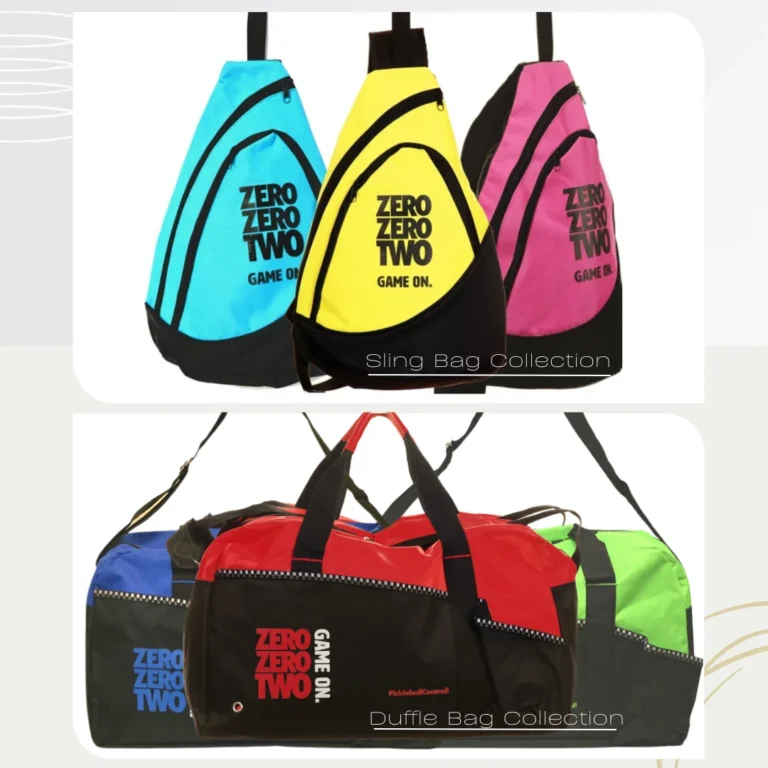
Pickleball Accessories To Enhance Your Play and Ace Your Style
Ever wondered how your Pickleball style could reach new heights? Learn the secrets of success with the “Pickleball Accessories To Enhance Your Play and Ace Your Style”.
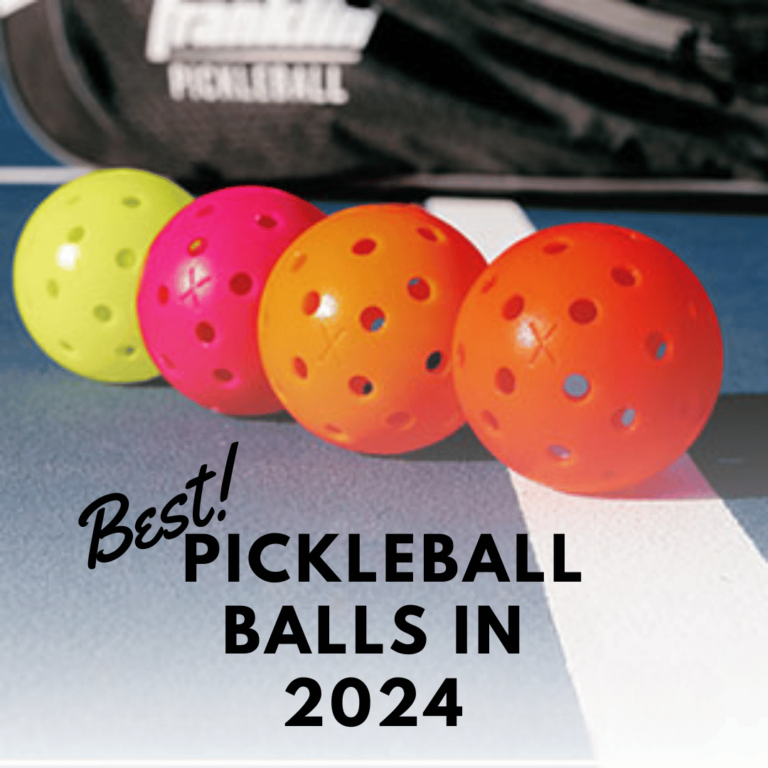
Best Pickleball Balls in 2024 For All Conditions
Are you seeking the perfect Pickleball balls for 2024? Let’s find out why they’re the “Best Pickleball balls for 2024”.
Would you like us to feature your brand in our upcoming blog post? Collaborate with us.
